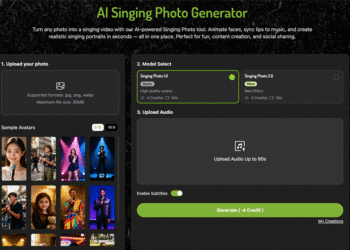Have you recently implemented AI agents into your business processes, or are you just considering this possibility? Either way, you’ve made the right choice, as investing in AI tech today will bring you lots of benefits in the long-term perspective. This is a solution that will definitely pay off thanks to the automation of some routine processes without the need for hourly pay. However, you should know a few secrets to get a «virtual» agent that performs many important tasks.
It is no secret that some AI solutions for enterprise can be used for different tasks. Agents, in turn, are a universal tool that you can customize as you wish. In this article, we would like to share some tips that will allow you to use all the capabilities of your AI agent. Only time-tested strategies and tactics!
1. Clearly Understand Your Goals
You must know what you want to accomplish before the implementation of AI agents. Badly on the point is the use of advanced tools without matching them to actual goals too frequently by businesses. Would you like to become more efficient, stop doing the same thing over and over, make better decisions, or offer better customer service? Goal definitions offer a structure to gauge the actual worth of AI, as they will enable you to understand whether AI is saving time, reducing expenses, or opening new windows.
It also avoids the waste of resources because one knows what to do at the onset. Vague goals can result in a poor use of the AI agent or impractical outputs on the part of the team. Clearly defined goals, though, will enable you to choose the appropriate features, to adequately train the agent, and position it to best meet business priorities.
2. Start Work with Simple Tasks
The introduction of the artificial intelligence agents is more potent when not enforced all at once. Small repetitions of tasks in the beginning enable teams to gain confidence and get experience without heavy complexity. You may, say, delegate first the scheduling, data entry, or simple customer inquiries. These mini wins prove that the agent is capable of reducing workload and still being precise.
After the fundamentals are secure, you may branch out into more complex use cases. The low risk factor is reduced, leaving room to learn by doing. It also makes sure your team can acclimatize gradually, before getting on the projects involving greater values.
3. Improve Your AI Agent Regularly
Undoubtedly, your enterprise AI tools must constantly learn and upgrade. In the previous tip, we mentioned that it is best to start with the simplest tasks. You should gradually increase the load on the «smart» agent by providing new information. However, some AI-based solutions are self-learning by default. That is, they memorize all information and requests, taking this data into account when performing new tasks. Here are some time-tested strategies for improving AI agents:
- Train the AI to respond strictly according to the JSON schema. Some users encounter very long responses with a high amount of «water» content. A clear restriction on the JSON schema will allow for short and meaningful responses.
- Implement RAG. The use of retrieval-augmented generation ensures that AI provides answers based only on real facts. No fictitious information.
- Tell more about your business. You should regularly provide the model with more information about your company that will be needed for answers.
Artificial intelligence-based tools must always progress and evolve to provide more benefits for your business. The quality of their responses also depends on the specialists involved in the development process. That is why we recommend paying attention only to reliable companies, such as Easyflow, which is trusted by many well-known firms.
4. Integrate AI Agent with Internal Tools
The full power of AI agents can be revealed when they integrate with your current platforms, allowing your team to use them effortlessly. The communication channels, CRM systems, or project management systems to which they are connected facilitate the flow of data. The integration minimizes the updates at all times and thus makes the agent take the nature of a hub for the daily activities.
In integration, come up with the essential tools for business that guide the bulk of your operations. Why? The outcome is an improved production process that wastes less time and ensures that your team is able to remain strategic.
5. Take Care of Security in Advance
The efficiency that AI agents provide is attractive. Yet new risks also emerge, and they should be discussed at the onset. What do we mean? Given that such systems tend to deal with customer information, financial statements, or messages between employees, loose security may lead to severe vulnerability. To avoid this, establish encrypted channels, role-based access, and active monitoring of activity before ramping usage. By setting things early, there is a smooth transition into adoption that does not put your organization at risk of unwanted threats.
Powerful cybersecurity strategies are not merely optional extras. They must also be in the implementation plan of the AI. Train your staff on safe information conduct, book frequent security checks, and keep abreast of any changes in laws. Security on all layers of your AI use will give you a great bedrock.
Wrapping Up
As you may have already realized, artificial intelligence technologies are a powerful force that can be useful in a wide variety of scenarios. When it comes to business, your own AI agent can help you process orders, advise potential customers, compile reports, and much more. Over time, the functionality of artificial intelligence and machine learning will grow rapidly. We recommend that you seriously consider implementing AI-powered enterprise solutions today to gain a significant advantage over your competitors.
The most important thing is that you use the agent correctly, maintain it, train it, and take care of its security. This approach will allow you to get a secure virtual assistant that can be useful in various tasks. Companies such as Easyflow help you create a custom AI agent, taking into account your goals, requirements, and specific features.












































































